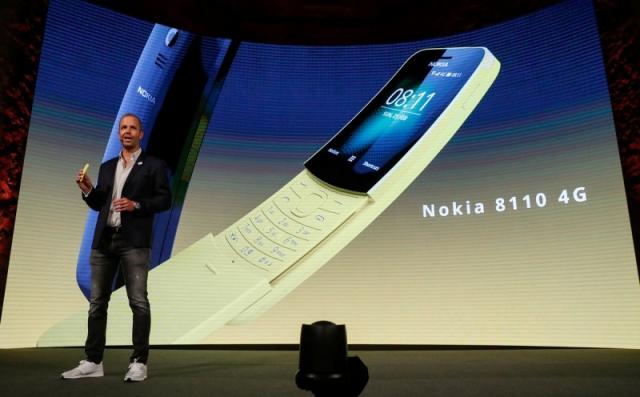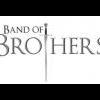Search the Community
Showing results for tags 'iconic'.
-
Source: https://www.mycarforum.com/forums/forum/15-lite-amp-ez/?do=add The 1970s were an irrefutably iconic era in history. The decade gave us bell bottoms, the Disco revolution, and plenty of products that left their mark. Several items, like the Rubik’s Cube and Dungeons & Dragons, celebrate their 50th anniversary in 2024. From their humble beginnings in garages and labs, these objects from 1974 have grown to become integral parts of our everyday lives. 1. Post-It Notes In 1968, a scientist named Spencer Silver accidentally developed an adhesive that struck the balance of being weak enough to separate papers without tearing while still being strong enough to stick to an additional surface. But Silver and his company couldn’t think of a practical way to market the adhesive. For a time, it remained a fruitless idea. Everything changed when a man named Art Fry entered the picture in 1974. While singing in church, he wondered if there was a way to leave a stick-on bookmark in his hymnal without damaging it upon removal. Fry and Silver worked together to develop prototypes, and eventually, the modern-day Post-It Note was born. 2. The Rubik’s Cube There aren’t many products that both educate and entertain—but the Rubik’s Cube, developed in 1974 by a Hungarian puzzle-lover named Ernő Rubik, is certainly an exception. Initially called a “Magic Cube,” it was marketed as a tool to help children learn about three-dimensional objects, but it wasn’t actually built for that purpose. Rubik was genuinely fascinated by geometry and invented the cube to challenge himself. By doing so, he created a frenzy of fans called “cubers” and a legacy that lasts to this day. 3. The UPC Bar Code Inventor Joe Woodland came up with the idea of what is now known as the bar code while relaxing on the beach. He jotted a design in the sand and knew that it had the potential to revolutionize shopping. After going through a series of trials, prototypes, and designs, the first UPC Bar Code was scanned in a small Ohio town called Troy in 1974. The product that started it all? None other than an average pack of Wrigley’s Juicy Fruit gum. Now, Woodland’s invention is a permanent fixture in the world’s shopping experience—not to mention an absolute blessing for those who have to regularly conduct stock inventory. 4. The Silver Robotic Arm Despite ongoing debates regarding the ever-increasing use of robots and the development of AI—the latter of which is coding and programming that creates systems with human-like intellectual processes, while the former refers to the machines themselves—the importance of robotics within modern society can hardly be questioned. The year 1974 was a big one for robotics, particularly in the industrial context. It’s when MIT student David Silver invented what is now referred to as the “Silver Arm.” The device was built to simplify small-part assembly and was equipped with touch sensors and the ability to provide tactical feedback—functions that were practically unheard of in robotics. The machine paved the way for automated production. 5. Bailey’s Irish Cream If you’ve ever enjoyed a nutty Irishman or other coffee-based cocktail, chances are that you’ve had the opportunity to taste Bailey’s Irish Cream. This liqueur is iconic for being the first of its kind, a surprisingly delicious combination of the richness of cream and the powerful punch of whiskey. Though cream-based alcohol is now fairly common, this wasn’t the case back in 1974. 6. The Heimlich Maneuver Before Henry Heimlich popularized his namesake abdominal thrust maneuver—which he detailed in a 1974 article called “Pop Goes the Café Coronary”—the common response to choking was repeated strikes to the back. The Heimlich Maneuver started as a theory based on the doctor’s observations in dogs and turned out to have a high success rate in preventing fatal choking episodes. 7. Stephen King’s First Novel, Carrie Often referred to as the “King of Horror,” novelist and film director Stephen King has been taking on the frighteningly impactful genre for decades. King’s first novel, Carrie, is a story about a young girl who is relentlessly bullied and retaliates with telekinetic powers. The novel kicked off King’s long and decorated career in the horror genre in 1974. 8. The U.S. Privacy Act The U.S. Privacy Act is as important today as it was when it was enacted in 1974. Think about it like this: Imagine the government has a huge filing cabinet with folders about everyone, containing things like your name, where you live, and maybe even your medical history. The Privacy Act regulates how federal agencies collect, use, and disseminate people’s personal information. It’s not just about hiding the information either—it’s about keeping it safe and ensuring the government doesn’t commit unwarranted invasions of privacy. 9. Connect Four Connect Four, developed by the board game company Milton Bradley, debuted in 1974. It was inspired by the classic Tic-Tac-Toe; Connect Four players seek to get four chips into an uninterrupted row to secure a win. 10. Skittles Skittles was originally invented in the United Kingdom in 1974, though the confection didn’t enter the U.S. candy scene in North America until 1979. There isn’t a lot of confirmed information regarding the origins of this fan-favorite candy—rather than state the truth, the website for Skittles contains a wild tale about how the rainbow treats came from space. 11. Modern Liposuction The first documented instance of someone attempting cosmetic fat sculpting occurred back in 1921, though that method was quite painful and had horrifying results. In 1974, a father-son duo deployed an improved version of the procedure that remains the basis of modern liposuction techniques. Arpad and Giorgio Fischer used a criss-cross suctioning method that yielded far better outcomes than earlier attempts, and although they only applied this technique to the outer thighs, it remains the basis of this now-common aesthetic procedure. 12. DayQuil DayQuil has served many a person suffering from a nasty headcold since it hit shelves in 1974. It was originally known as DayCare, as it includes non-drowsy ingredients suited for daytime relief from a cold or flu. 13. The Meow Mix Jingle The cat food brand Meow Mix hit the market in 1974. That same year, the brand aired its first commercial, featuring its now-signature jingle sung by singer Linda November. 14. Kinder Surprise Eggs Kinder Surprise is an egg-shaped chocolate candy with a hollow center meant to store a small gift or prize. The egg, which debuted in 1974, is only one of a vast array of Kinder chocolate products. Though Kinder Surprise is theoretically an excellent idea, it has a rocky relationship with the United States government. In 1997, the U.S. Consumer Product Safety Commission (CPSC) banned Kinder Surprise in the United States, deeming it a choking hazard. But the treat remains well-loved in European nations like the United Kingdom. 15. The Canon “Datematic” Photography became a lot more accessible in the 1970s. In 1974, Canon developed their “Datematic” 35 mm camera. The compact camera’s main draw was its lightweight design, which manufacturers achieved by building the camera from reinforced plastic. The camera served as inspiration for future SLR cameras. 16. Dungeons & Dragons The tabletop RPG Dungeons & Dragons has been embedded in pop culture since 1974. Though the game is well-known as a benchmark in fantasy media, it didn’t begin with that intention. Dungeons & Dragons was initially meant to be a medieval combat game, with a short included guide detailing how it could also be used in a fantasy setting. This small element became its primary appeal; the game’s first run sold out within a year of its release. 17. Bold Laundry Detergent Bold, a brand of laundry detergent owned by Proctor & Gamble, was released to the UK market in 1974 as their first low-suds biological laundry detergent. It has remained a popular product ever since. 18. The Arecibo Message The Arecibo Message was transmitted via a device known as the Arecibo radio telescope. Unfortunately, though, it wasn’t a genuine attempt to contact aliens. Instead, it served as a testament to how far space technology had come. 19. People Magazine With nearly 2600 issues under its belt, People magazine is one of the most iconic pop culture news sources in the U.S. The magazine has had nearly every celebrity from Cindy Crawford to Leonardo DiCaprio adorn its cover. Its first issue hit newsstands in March of 1974. Who was plastered on the paper’s first cover? None other than actress Mia Farrow, known for her portrayal of Daisy Buchanan in that year’s film adaptation of The Great Gatsby. 20. The Volkswagen Golf Volkswagen launched its popular Golf model in 1974. The model has been through several important phases, with seven generations and over 35 million sold units worldwide. Before the Golf’s release, the Beetle dominated the Volkswagen lineup due to its reputation for both accessibility and affordability. But once the Golf hit the market, it quickly set a new standard for compact cars and demonstrated the innovative ability of the Volkswagen brand.
-
https://www.scmp.com/news/hong-kong/society/article/3182426/hong-kongs-iconic-jumbo-floating-restaurant-capsizes-south Hong Kong’s iconic Jumbo Floating Restaurant has capsized in the South China Sea, following its departure last Tuesday for a new home in an unannounced place, its owner has confirmed. In a statement on Monday, the Aberdeen Restaurant Enterprises said: “On Saturday afternoon, it was passing Xisha Islands [Paracel Islands] in the South China Sea when the vessel encountered adverse conditions … [water entered the vessel] before it began to tip. “Despite the efforts of the towing company responsible for the trip to rescue the vessel, unfortunately it capsized on Sunday.” “The water depth at the scene is over 1,000 metres, making it extremely difficult to carry out salvage works,” it said, adding that it was “very saddened” by the incident and was seeking further information from the towing company. Tragic! End of an era for an icon and symbol of Hong Kong. It was never going to end well with the kinda condition it was in. Kitchen barge started sinking on 1st June after its announcement to depart Hong Kong. Singaporeans will say "Huat ah! Can claim insurance liao!"
- 112 replies
-
- 7
-

-

-
.png)
-
- jumbo floating restaurant
- hong kong
-
(and 2 more)
Tagged with:
-

Red Bull cars to feature iconic 007 logos at British Grand Prix
chitchatboy posted a blog entry in MyAutoBlog
Aston Martin will be celebrating the James Bond Heritage by dressing up two Red Bull cars with the 007 logos on their cars. These logos will appear at the British Grand Prix at Silverstone. Other than the 007 logo, the Formula 1 cars will also get a decal of the Bond number plates on the back of their rear wings. Max Verstappen will be featuring the plate from the Aston Martin DB5 in Goldfinger (1964), while Pierre Gasly’s car will feature the Aston Martin V8 number plate from The Living Daylights (1987). To complete the look, the team’s pit garage will also feature wall graphics inspired by Q’s MI6 laboratory. Aston Martin cars have always been connected to the James Bond franchise since its beginnings. Through the years, Bond got to drive many models, such as the V8 Vantage Volante, the DB10, the DBS and the iconic DB5. -
Nokia brings back iconic 8110 'banana phone' Feb 26, 2018 BARCELONA/HELSINKI - Seeking to capitalise on their comeback over the past year, the makers of Nokia phones are expanding to include a premium Android smartphone, their first, and a remake of one of its biggest hits of the 1990s, the 8110 "slider" phone. Set up by ex- Nokia executives who have licensed the famous brand, HMD Global - as the year-old company is known - has focused on mid-priced Androids and even sub-$100-priced phones since entering the smartphone market. Chief Executive Florian Seiche said HMD has sold around 30 million phones after introducing 11 new phone models over the past year. On Sunday, it announced two new models, plus refreshed versions of three phones first offered last year. "We feel great about the momentum we had in 2017 and that gives us the confidence to double down in 2018," Seiche told reporters at a briefing in London ahead of the product launch. Mobile phone market tracker Counterpoint Research said Nokia phones surged during 2017 to become the world's No. 1 seller of low-cost feature phones and No. 11 in smartphones after only entering the market last year. On a combined basis, Nokia now ranks as the No. 6 mobile phone seller, Counterpoint calculates. HMD's strategy is to use distribution partnerships with 600 top mobile operators and retailers in selected markets around the world to offer reliable, affordable products with the latest innovations, plus monthly Google security updates on all phones. Europe remains the biggest region for Nokia phones sales, Seiche said; India, Russia and Indonesia are its biggest country markets. The Nokia 8 is the company's flagship phone, priced at 749 euros (S$1,215) and designed to compete with Samsung's and Huawei's premium models. A new, 4G-ready version of Nokia's 8110 is priced at 79 euros. Nokia 8 is available in April, the revamped 8110 in May. The 1990s throwback model comes in two colour choices, classic black or banana yellow, a play on how its keyboard slid out, inspiring the nickname "banana phone". Nokia Corp, once the world's dominant phone maker, sold its handset business to Microsoft in 2014 and is now focused on telecom network equipment. HMD took over the Nokia feature phone business from Microsoft in 2016 and struck a deal with Nokia Oyj to use the brand on smartphones. http://www.asiaone.com/digital/nokia-phones-look-future-and-past?xtor=EREC-16-4[Emarsys_Newsletter]-20180226&extid=6934d0cfb7b252f1ae9f0dbddf5ff88ca8637e77
-
Good to see an iconic Lancer in the resale market. This Lancer came in 3 models - 1.4GL (4 speed manual, without tacometer), 1.4SL (5 speed manual, with tacometer) and 1.6M (5 speed with tacometer, shared same engine as Galant 1.6). The 1.4l model was the top seller from 1979 to 1982. The Toyota Corolla 1.3 did not even come close. It was the most spacious in its class. But the *Lancer F 1.2 replacement model in 1983 was a failure and sales dropped drastically. *Refered to as 3rd generation Lancer Fiore in hyperlink below: http://jambu2011.blogspot.sg/2011/09/generation-by-generation-mitsubishi.html It came with skinny 155/80R13 stock tyres. Many owners upgraded to 175/70R13 tyres. It came without power steering and you need brutal muscles to navigate a parking lot. Power in 1st gear was non existent. Rev till 4000rpm + , and the car accelerates to 20km/h max. 4000rpm on 2nd gear gets you to 40km/h. Significant power comes only in 3rd gear. That is based on only the driver on board. Today's 998cc Perodua Kelisa can anytime beat this Lancer in a 0-100km/h sprint with minimal effort. But there is no way I will pay $23,800 for this Lancer. Grossly underpowered, hard gearshift, no driving pleasure and a fuel guzzler at 10km/l for a 1.4l N.A. engine. And you need to add lead additive during every top up. Using unleaded petrol leads to significant loss of power. http://www.sgcarmart.com/used_cars/info.php?ID=393718&DL=2548
- 25 replies
-
- 2
-

-
- mitsubishi
- mitsubishi lancer
-
(and 4 more)
Tagged with:
-
Link Cleopatra, Cixi wrong choice as iconic women MEDIACORP is currently promoting its Singapore Women's Month through regular television and radio spots. The four iconic women it has chosen to front the promotion include Queen Cleopatra of Egypt and Empress Dowager Cixi of China (Mother Teresa and US aviation pioneer Amelia Earhart are the other two). To state that Cleopatra saved Egypt with her beauty is as sexist as it is absurd. One might just as well say that Pocahontas saved the American Indians with her naivete. Cleopatra indeed seduced Julius Caesar with her feminine charms but in her historic role, she was proven more a political player with obvious self-advancing motives than a self-sacrificing saviour of her kingdom. After Caesar's assassination, her charms were next applied on Mark Antony whom she dropped just as quickly when fate instead favoured Octavian. Ancient Egypt thus became a Roman province and she ended the line of pharaohs when she finally sought the company of an asp. More ludicrous is the assertion that Cixi ruled China with her strength (and wisdom in the Chinese spots). Even after one discounts her commonly perceived traits of cruelty, selfishness, corruption and debauchery, Cixi's rule did little to advance the imperial fate of China. Endowed with an 'arsenic' will to stay in power, Cixi schemed extensively to be the de facto force in the Qing court, out-manoeuvring ministers, princes and even emperors. Her penchant for luxury had her building lavish palaces at a time when China was on the brink of bankruptcy and the population was living in abject poverty. She actively squashed all manner of Western reforms when they were most needed, and with little grasp of the gravity of China's gross inadequacy during the colonial era, she even threw in her weight behind the ill-fated Boxer Rebellion, to drastic consequences. Having pulverised all prospects of restoration for the Qing, she departed with just a tot (the toddler Puyi) in station, setting the scene for the final stage of dynastic destruction that would let loose decades of civil strife and suffering in China. Iconic these women may be, but I believe we have others in human history to select from for better representation. The sentiments may be right but the facts and presentation are plainly wrong. Cedric Tan
- 14 replies
-
- Mediacorpse
- dodgy
-
(and 3 more)
Tagged with:
















